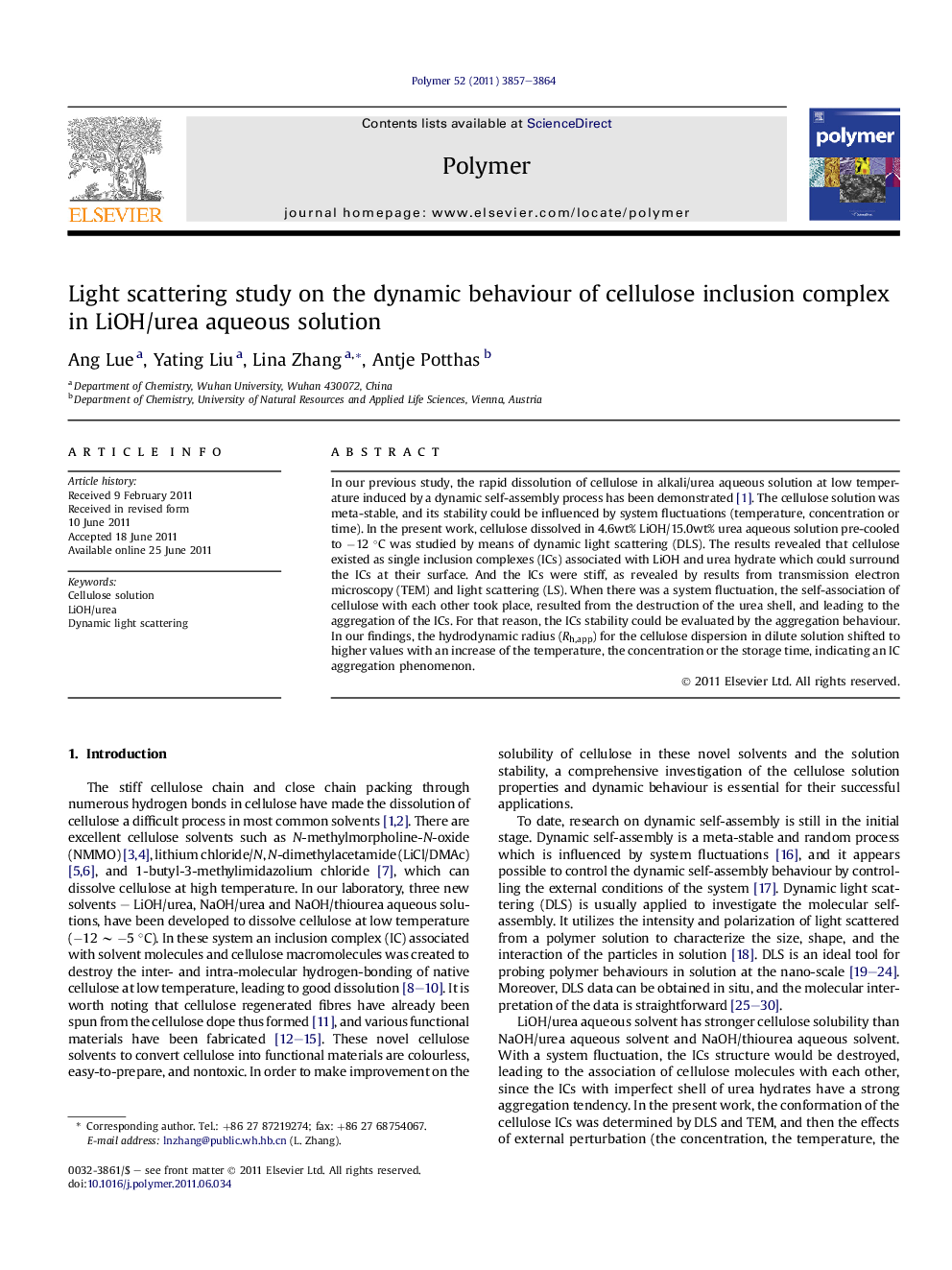| Article ID | Journal | Published Year | Pages | File Type |
|---|---|---|---|---|
| 5184574 | Polymer | 2011 | 8 Pages |
In our previous study, the rapid dissolution of cellulose in alkali/urea aqueous solution at low temperature induced by a dynamic self-assembly process has been demonstrated [1]. The cellulose solution was meta-stable, and its stability could be influenced by system fluctuations (temperature, concentration or time). In the present work, cellulose dissolved in 4.6wt% LiOH/15.0wt% urea aqueous solution pre-cooled to â12 °C was studied by means of dynamic light scattering (DLS). The results revealed that cellulose existed as single inclusion complexes (ICs) associated with LiOH and urea hydrate which could surround the ICs at their surface. And the ICs were stiff, as revealed by results from transmission electron microscopy (TEM) and light scattering (LS). When there was a system fluctuation, the self-association of cellulose with each other took place, resulted from the destruction of the urea shell, and leading to the aggregation of the ICs. For that reason, the ICs stability could be evaluated by the aggregation behaviour. In our findings, the hydrodynamic radius (Rh,app) for the cellulose dispersion in dilute solution shifted to higher values with an increase of the temperature, the concentration or the storage time, indicating an IC aggregation phenomenon.
Graphical abstractDownload full-size image
